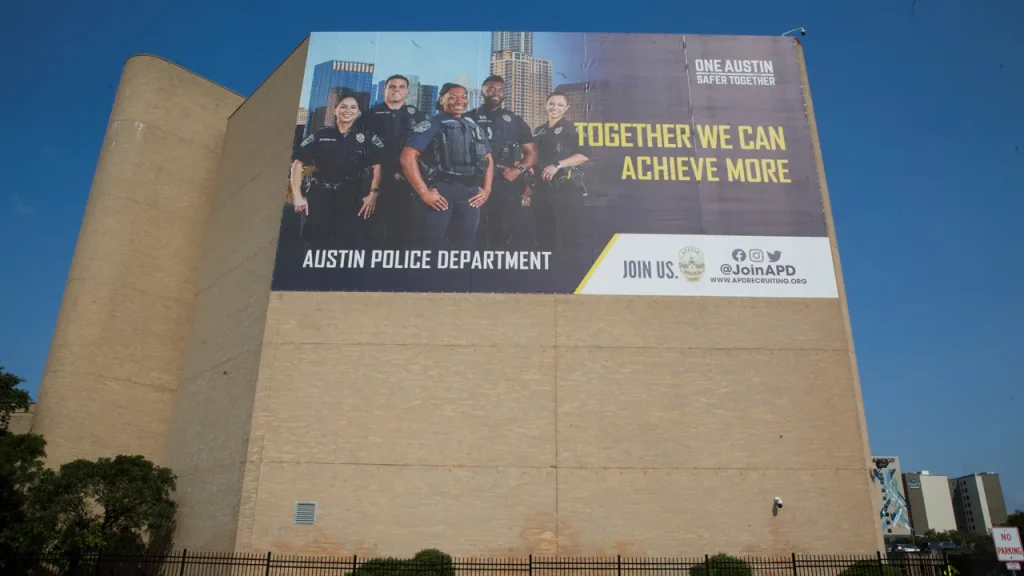Human Trafficking in America’s Shadow: The Fight Against Illicit Massage Parlors
In a coordinated nationwide effort dubbed “Operation Coast to Coast,” law enforcement agencies across America are targeting the sinister reality behind seemingly innocuous massage parlors. Fox News recently embedded with the Austin Police Department during raids that revealed the dark underbelly of human trafficking operations. As officers shouted “Austin Police! Search warrant!” through loudspeakers, they uncovered scenes that told stories of exploitation and suffering: disheveled rooms with mattresses, makeshift living quarters, and ironically, signs warning against the very human trafficking taking place within. The contrast between the advertised spa services and the grim reality inside spoke volumes about the deception involved in these operations, where victims are hidden in plain sight in our communities.
The nationwide crackdown involved more than 150 law enforcement agencies across Texas, North Carolina, California, Missouri, and New York, focusing specifically on illicit massage businesses that serve as hubs for human trafficking and profit centers for Chinese organized crime networks. Dan Nash, founder of the Human Trafficking Training Center, which coordinated the operation, emphasized the alarming growth of this industry: “The illicit massage business industry is the fastest growing of all trafficking in America. It is all Chinese organized crime. All this money is going right back to China, the victims are coming over here from China.” The scale of the operation reflects the growing recognition among law enforcement that these aren’t isolated incidents but part of sophisticated criminal enterprises that operate across state lines and international borders.
The human toll of these trafficking operations is staggering. During Operation Coast to Coast, more than 30 people were arrested on trafficking and related charges, while over 60 victims were rescued and offered services. Among them was a 14-year-old girl who had been forced to service more than ten men daily through escort sites. For Lieutenant John Brooks of the Austin Police Department, the work extends far beyond arrests and seizures—it’s fundamentally about human rescue. “Quite often, they are victimized, forced, coerced, threatened in some way,” he explained. “Their passports withheld, their families threatened, they themselves are threatened, or get hooked on some sort of drug.” Walking through rooms filled with beds where exploitation occurred, Brooks reflected on the unimaginable suffering these women endured, highlighting the human dimension of what might otherwise be viewed as simply a criminal enterprise.
The challenge for law enforcement isn’t just finding and shutting down these operations, but helping victims recognize their own victimization and accept assistance. Many trafficking victims don’t identify as such, having been manipulated through complex psychological conditioning or threats. The Austin Police Department employs on-site victim service counselors as part of their victim-centered approach, recognizing that successful intervention requires more than just arrests. “The toughest challenge,” Lt. Brooks noted, “is getting victims to realize there are options and resources to help.” This psychological dimension of trafficking makes it particularly insidious—victims may fear law enforcement more than their traffickers, believe they have no alternatives, or worry about threats to family members in their home countries. Breaking through these barriers requires specialized training and patience from officers and support personnel.
Organizations like the Safe House Project play a crucial role in the aftermath of these operations, bridging the gap between rescue and recovery. CEO Kristi Wells describes their mission as being there “in those 10 seconds of insane courage, when they look to escape.” The organization served over 1,500 trafficking victims last year and expects to help more than 3,000 this year—numbers that reflect both the growing scale of the problem and increasing effectiveness of intervention efforts. Their approach focuses on individualized care, working to understand each survivor’s specific situation and matching them with appropriate safe homes equipped to address their unique needs. This recognition that recovery from trafficking requires personalized, trauma-informed support represents an evolution in how society responds to trafficking victims, moving beyond a one-size-fits-all approach.
The fight against human trafficking through illicit massage parlors exemplifies how modern slavery operates in contemporary America—hiding behind legitimate-seeming businesses, exploiting immigration vulnerabilities, and relying on customers who may be unaware or unconcerned about the exploitation enabling their services. Operation Coast to Coast demonstrates that effective counter-trafficking requires coordination across jurisdictions, collaboration between law enforcement and victim service providers, and a commitment to seeing trafficking not just as a crime but as a human rights violation happening in our neighborhoods. As Lt. Brooks and his colleagues continue their work, they’re not simply enforcing laws but engaging in what amounts to modern-day abolition—working business by business, victim by victim, to dismantle systems of exploitation that have adapted to operate in the shadows of our communities. The raids in Austin represent not just local police action but part of a growing national recognition that human trafficking requires a coordinated, compassionate, and comprehensive response.


